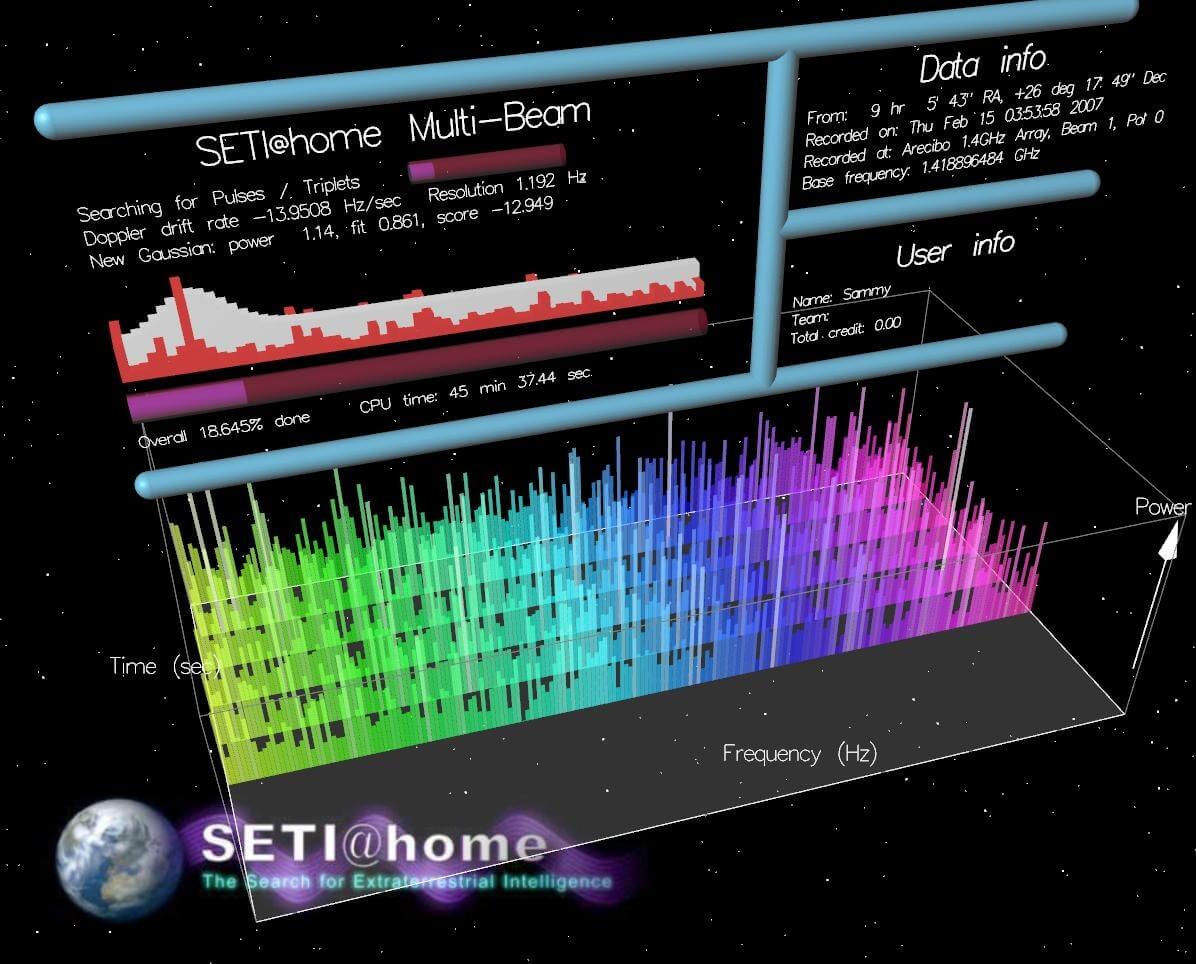Fun facts: SETI@Home launched on May 17, 1999 and gathered millions of participants from hundreds of countries to concentrate their computing power on crunching data obtained from radio telescopes. In 2011, the network it ran on (BOINC) was listed by Guinness as the world's largest computing grid. At last count, it had "approximately 527,880 active hosts providing a massive average 5.428 petaFLOPS of computational power."
The Search for Extra-Terrestrial Intelligence announced it is ending SETI@Home on March 31. The project was started in 1999 by the University of California at Berkeley. It was a crowd-sourced public effort to comb through data collected by radio telescopes looking for anomalous signals or patterns.
The way it worked is, users would download and install the SETI@Home software. The client acted as a screensaver only running while the computer was idle, but could be set to run continuously. Chunks of data were sent out from Berkeley's BOINC (Berkeley Open Infrastructure for Network Computing) network to project members. The program would crunch the data, then send back the results and retrieve another work unit. It essentially created a massive supercomputer with over 5 million users at its height.

The reason for the "hibernation" of the project is that it has come to a "point of diminishing returns."
"Scientifically, we're at the point of diminishing returns; basically, we've analyzed all the data we need for now," said project heads in the SETI@Home forum. "It's a lot of work for us to manage the distributed processing of data. We need to focus on completing the back-end analysis of the results we already have, and writing this up in a scientific journal paper."
They are calling the closure hibernation instead of cancelation because it is not completely shutting things down. The forum and website will remain open, and they will allow researchers to use the software for other things such as cosmology and pulsar research. Additionally, home users of the client can continue using it to help other BOINC-based projects. Berkeley has a listing of these on its website.
